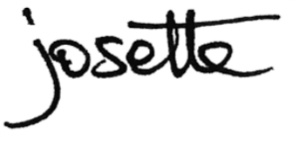n i O k a by Nika Ravnik
Nika Ravnik is a designer from Slovenia, based in Ljubljana, working on her creative clothing label, NIOKA.
“Recently my main focus has been designing by the zero-waste principle creating one-offs, which are mostly one-size-fits-all and versatile garments, but with a high aesthetic value in mind.”
Nika photographed by IVIAN KAN MUJEZINOVIĆ
Josette asked Nika a few questions
How did you get started?
I grew up in Solkan, a small place on the border with Italy. Then moved to Ljubljana where I finished my studies in Fashion and Textile Design at the University of Ljubljana. In London, I upgraded my education with a costume design course at Central Saint Martin’s school of Art and Design, and attended a year of exchange program at Design School Kolding in Denmark, that time was very important to further my creative development as it opened my view on fashion with a totally new perspective. I started making commission-work during my studies, but more seriously in 2009 with a little collection for a concept store in Zagreb, Croatia. Besides my own work, I also collaborate on different projects as a costume designer and stylist.
What inspires you?
The arts, geometry and odd things/situations in everyday life.
Are there recurring themes in your work?
Every project is a new story but geometric forms are key to my designs.
How has your work evolved since you started?
I have evolved my own design language, from simply wearable to more experimental, even though the core idea is always there. You can see the difference between my early collections and current work, which is quite normal. I started with more wearable things then dived into constructivism, my work became more abstract. I then moved abstraction-element into geometrical construction of the graphic patterns and returned the items into more wearable form. That way I added another level as I poured the abstract-form also into the surface. Sometimes I make 3D patterns from pieces that I use and then re-use them as textile graphic-design. With additional hand-picked details I change clothes into 3D artworks - abstract on one level but applied and useful on another. Often a new piece is an echo of another one, a layer is connecting more of the work than it seems at first glance. They are all connected on some level.
Your brand is aiming to be sustainable and eco-friendly, can you tell us a bit more about that and what this goal involves?
I am not fond of the idea of putting labels on almost everything around us, but sometimes they are needed to distinct right from wrong. Until the integrity values of the sustainability movement rises within the fashion industry, the labels such as sustainable, eco-friendly and slow fashion will stay alive.
My first all zero-waste dress collection N°0 from 2014 was created out of the necessity of making something of high aesthetic value with a smart approach. It was a challenge to myself to do it another way, different from the usual pattern cutting. Some derive from Japanese techniques. The final result turned out great in addition to the enjoyable creative process behind it, so I decided I wanted to continue discovering this path.
Of course, having the aesthetic value in mind, the zero-waste approach is a challenge as it doesn’t always work out the way I would like to. But it gives me the drive to come up with new exciting solutions. For now it works on dresses, tops and skirts. So the goal is creating well-designed, authentic garments with longevity as the key-word.
I know that for now, at the end of the day, what matters to people is the aesthetic value and not really the process behind it. But isn’t it thrilling to purchase products that besides looking good are mindfully made with passion and ethically produced with quality materials that will last longer?
How do you stay motivated?
The idea of making a difference motivates me.
Tell us something you wish you had known early on.
I would have liked to be more conscious of fast-fashion and consumerism issues early on. As a teenager I remember traveling to Sweden in 1999 and being so happy to buy some stylish and affordable clothing at one of the fast-fashion retailers with no clue what I was supporting. At the time there was none in Slovenia, they opened a few years later and with that the consumer’s perception changed.
Do you always have a clear plan when you start a design?
Usually I don't have a precise sketch, but I do have a concept. A concrete detail of an inspiration which turns to an exact pattern-cut and a system to amplify and manipulate it. It’s through the creative process that the item is developed into its final shape. The charm of the unknown.
“In my work process there is a lot of experimentation. It begins in simplicity with geometric pattern-cuts and simple lines developing into more complex final products in the last stage by the draping technique. With an artisanal approach and avant-garde style, I aim for integrity, authenticity, good design and longevity as the core values of my work.”
Have your priorities changed since you started?
Now I work more mindfully, and I’m very selective when it comes to taking decisions that suit my values.
Who/what would you travel to see?
My love(r), great concerts/festivals, and art exhibitions - for example I regularly visit Venice Biennale.
What scares you?
Betrayal and bungee jumping - my hometown Solkan is famous for that, maybe someday...
What would you like to learn?
As technology is my weakness it would be great to learn some new tech programs to improve my work, and Japanese also.
How do you deal with judgment and criticism?
Sometimes I embrace it, sometimes I ignore it. Depending on who is the critic and how relevant is their opinion for my work.
Anything to add?
Slow down and plant trees!☺









